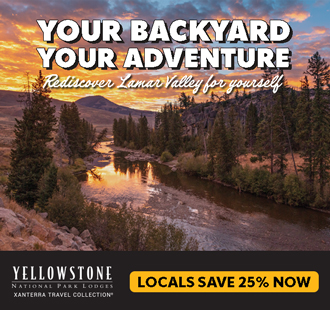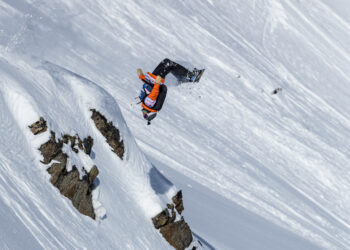
By Todd Wilkinson EBS ENVIRONMENTAL COLUMNIST
The “Greater Yellowstone Ecosystem” is a marvel in the modern world. Why is that?
Compared to everywhere else in the Lower 48 states, Greater Yellowstone’s natural landscapes, which encompass differing land management jurisdictions, remain intact and not wholly fragmented by human activity and development. In turn, this remarkable mixture of mountains and valleys, river corridors and open space, supports a concentration of large wildlife that is unsurpassed.
Here’s something I’ve discovered that most visitors to Greater Yellowstone are unaware of; indeed, it’s also a fact that even longtime denizens of our region, including young people, need to learn: every single one of the key iconic protected areas which create the above did not happen by accident.
They came as a result of vision, advocacy and conflict—by people who were willing to look beyond serving only their own personal needs and to instead think of future generations, both human and animal.
Today, there is a debate circling around how much land should be protected as federal wilderness in the Gallatin Mountains south of Bozeman and Livingston, and east of Big Sky. Why is safeguarding the wild character of the Gallatins important?
For the same reason that we recognize the virtue of earlier generations having created the Absaroka-Bearthooth Wilderness.
The reminder is writ large in a truly remarkable new book titled “Voices of Yellowstone’s Capstone: A Narrative Atlas of the Absaroka-Beartooth Wilderness.“
While it is a collection of great writing, breathtaking visuals and edifying maps, this amazing volume represents a dream project for its editors Traute N. Parrie and Jesse A. Logan who persevered and brought it to life in collaboration with the Absaroka-Beartooth Wilderness Foundation.
“Both the Beartooth and Absaroka Ranges are these imposing ranges that rise dramatically from either the plains in the case of the Beartooths, or the valley in the case of the Absarokas. In addition, the Beartooths are the largest contiguous area over 10,000′ in the lower 48, which helps reinforce that impression of a monumental range,” explained Parrie, a now-retired Forest Service district range in a recent interview.
“The ranges are particularly rugged, and relatively inaccessible—you have to earn your time there. And once you get there, you’re in the midst of an intact ecosystem, complete with apex predators,” she added. “As Jesse Logan has said, ‘this place doesn’t need rewilding— it already is [wild].’ So it’s a place you don’t just stroll into. It requires your attention, and hopefully, your reverence. “
Mighty mountains, be they the Absarokas, Beartooths, Gallatins or any other certainly need no books to declare their magnificence.
Human beings cannot do them adequate justice through the written word, visual interpretations or oral stories told around campfires. Towering expressions of nature, grander than anything Homo sapiens could manufacture—or even conceive of making given the fragile life forms interwoven into them—fit into the definition of ineffable.
Their creation predates us, they will outlive and out-endure us; their haunting allure will ground our descendants—as they did our—ancestors in the same kind of awe we feel today.
“Voices of Yellowstone’s Capstone: A Narrative Atlas of the Absaroka-Beartooth Wilderness” is a noble homage.
“The importance of ‘Wildlands’ and I capitalize the word to point out and honor their importance, in some restricted sense boils down to personal values,” Logan says. “But, beyond that, of profound importance to the human psyche. Volumes, literally, have been written about this genetic memory that reaches back far beyond even the myths of indigenous peoples.”
Never before has such a book captured the myriad ways that people have related to the Absarokas and Beartooths.
Today, much of it is protected as part of the federal wilderness, which rivals any for its wildness as established by the number and different kinds of solitude-needing animals that persist there and will need the untrammeled terrain as the effects of climate change deepen. What would the AB be like today without wilderness protection?
“For the Beartooth portion of the Wilderness in particular, it would be crisscrossed with ATV trails in summer and paved quite literally with snowmobile tracks in winter,” Logan says. “To gain an appreciation for what I’m saying, some July day take a stroll to Goose Lake following the 4-W (ATV) road one way, and then exit via the Wilderness trail the other. I need say no more.”
In other words, there is a profound difference in character of the land between areas overrun by people and others where humans have been willing to not impose their will upon special places.
I cannot more enthusiastically recommend that you add “Voices of Yellowstone’s Capstone” to your bookshelf; for whether you’ve been to the Absarokas and Beartooth or not, whether you live nearby them or not, this book conveys the spirit and allure of beloved high country anywhere on the planet.
“If truth be told, in these times when the Earth’s natural systems are unraveling at a frightening pace, I tend to find myself fond of almost any landscape broad and diverse enough to still spin the cloth of life,” notes Gary Ferguson of Bozeman, who spent decades in Red Lodge, writing in the book’s foreword. “Yet of all the big wild places still out there, the Absaroka-Beartooth is particularly enthralling.”















